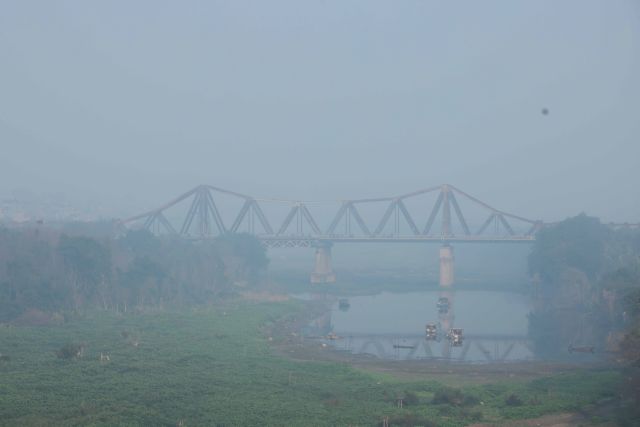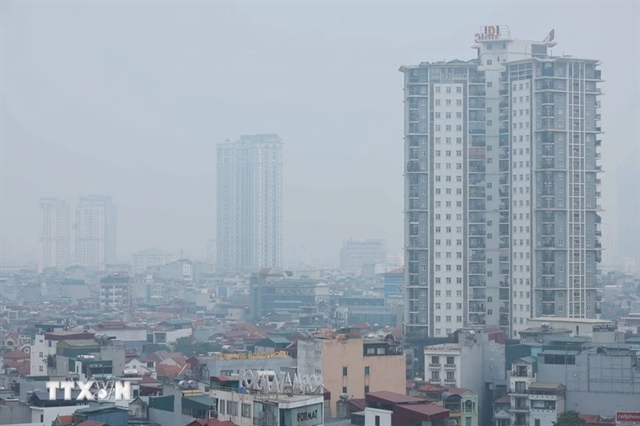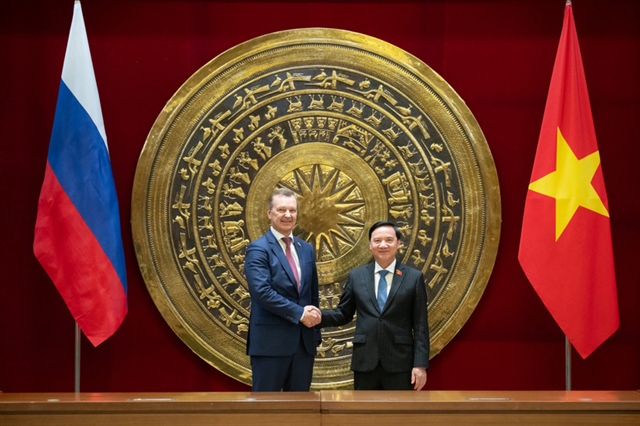 Environment
Environment

 |
| The air in Hà Nội remains at an unhealthy level as seen here, a photo from Friday morning. — VNA/VNS Photo |
HÀ NỘI — The Government has set a goal for Hà Nội and HCM City to bring air pollution levels within the safe threshold for human health within the next five years.
A recent notice from the Government Office, issued by Deputy Prime Minister Trần Hồng Hà, details urgent measures to tackle the growing air pollution in these major cities.
The notice highlights that managing air quality is a complex, cross-sectoral challenge, requiring coordinated efforts.
Despite the Government’s ongoing focus on controlling air pollution, levels continue to rise, particularly in the two biggest cities of the country, posing significant risks to public health and economic development.
The primary sources of pollution are emissions from transport, construction, industrial activities, and agriculture, all of which contribute large amounts of pollutants. These emissions are not effectively controlled and the enforcement of environmental regulations remains inconsistent.
To address this growing crisis, the Deputy PM has called on relevant ministries and agencies to implement specific, actionable solutions, with a clear roadmap for improvement.
The Government has instructed the People's Committees of Hà Nội and HCM City to urgently implement measures aimed at achieving safe Air Quality Index (AQI) levels within five years.
These measures include conducting emissions inventories and assessing air quality, developing five-year and annual action plans with clear targets, assigning responsibilities to relevant sectors and setting annual emission reduction quotas.
The plans also aim to encourage public transport use, transition to low-emission, green vehicles and strengthen local emission standards, with stricter policies expected to take effect by May.
Additionally, the measures focus on improving urban waste management, particularly controlling pollution from construction and development activities, phasing out outdated, high-emission vehicles and establishing low-emission zones.
The government is prioritising stricter monitoring of industrial emissions. Authorities in Hà Nội and HCM City are tasked with tightening environmental compliance checks and enforcing penalties for violations. There are also plans to relocate and upgrade industrial clusters into more sustainable industrial zones.
The expansion of air monitoring stations will provide real-time data, ensuring transparency for both authorities and the public. Government agencies will also ramp up public awareness campaigns to foster environmental responsibility among individuals and businesses.
The Ministry of Agriculture and Environment, along with relevant agencies, has been tasked with developing technologies for recycling rice straw and other agricultural by-products, while promoting low-emission farming models. It is expected to issue new vehicle emissions standards by the end of this month.
Ministries are required to review policies to support the recycling of construction waste into raw materials for other industries, helping reduce landfill.
A joint task force from the Ministry of Agriculture and Environment and the Ministry of Industry and Trade will begin inspecting high-pollution industrial clusters and craft villages in Hà Nội, HCM City and other affected regions. The inspections, set to be completed by July, are aimed at major polluters and will enforce stricter regulations.
Local authorities will be required to update emissions databases and connect them to national monitoring networks.
There will also be tougher enforcement of laws against illegal waste dumping and burning, with increased penalties for serious violations. — VNS




